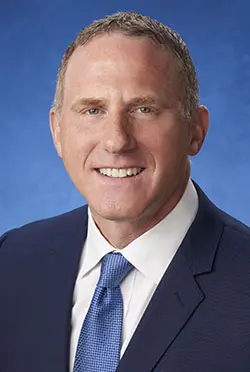Finding the Best Orthopedic Surgeon in Colorado Springs
Finding the best orthopedic surgeon in Colorado Springs is often based on a variety of factors. An orthopedic injury or chronic condition can be more than just painful – it can seriously affect your ability to perform routine activities, including those you enjoy. That’s why it’s important to entrust your orthopedic care to only the best orthopedic surgeon.
But how do you go about vetting the best orthopedist? Simple. By focusing on the surgeon’s:
Technical Ability and Track Record of Success
You might want to start by asking your primary care doctor who they would use to handle their surgery if they were in your situation. You can also get recommendations from friends and family who have had experience with orthopedic specialists. Once you arrange a consultation, ask the prospective orthopedist how many procedures they have done in the past year, what were the outcomes, and what, if any, were the complications.
Level of Training
Find out where the orthopedist received their medical degree. Inquire as to where they may have received additional fellowship training, which involves another year of training beyond a routine orthopedic residency. Does the surgeon sub-specialize in a specific area? The more advanced the training, the better it reflects on the surgeon’s technical skills.
Hospital Affiliations
To get the best orthopedic surgeon in Colorado Springs you need to know what hospitals they work with. This is where you will undergo your surgery, so you’ll want to evaluate the quality of care at these facilities. It matters, not just because of the convenience of the hospital’s location, but also because it’s a well-known fact that patients who undergo treatment at top-quality hospitals have fewer complications and higher survival and success rates.
Rapport With You
Trust between patient and doctor is important, but so is compatibility, especially when it comes to communicating with one another. In fact, it can affect the success of your treatment. That’s because undergoing an orthopedic procedure is often the start of a long-term relationship. For example, following a joint replacement, you will probably need to see the surgeon for follow-up visits for years to come. If that’s the case, you’ll want to feel comfortable with your choice of specialist and able to maintain a friendly and beneficial relationship.
Do Your Research
In your search for the best orthopedic surgeon in Colorado Springs, you can also check out online reviews and satisfaction surveys, as long as you realize that these are limited to a small segment of the doctor’s clientele and may not address your specific medical needs. It’s better to ask your primary care physician for a referral list, then research each doctor’s credentials and experience on Healthgrades.com.
As a practical matter, you should also choose an orthopedic surgeon who not only meets the desired criteria, but also participates in your insurance plan. That way, you’ll receive the best care while paying the least amount out-of-pocket.
Best Orthopedic Surgeons in Colorado Springs
For world-class orthopedic surgeons in Colorado Springs, it’s worth your while to check out the Colorado Center of Orthopaedic Excellence.
Our physicians are board-certified and fellowship-trained, with experience treating a variety of injuries and chronic orthopedic conditions.
Call us at (719) 623-1050 or schedule an appointment today.

 COLORADO SPRINGS – July 10, 2018 – The Colorado Center of Orthopaedic Excellence (CCOE) is pleased to welcome Dr. Jason Scott Weisstein to its orthopaedic team, adding a whole new dimension in the orthopaedic care provided by the practice.
COLORADO SPRINGS – July 10, 2018 – The Colorado Center of Orthopaedic Excellence (CCOE) is pleased to welcome Dr. Jason Scott Weisstein to its orthopaedic team, adding a whole new dimension in the orthopaedic care provided by the practice.